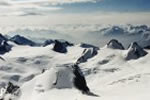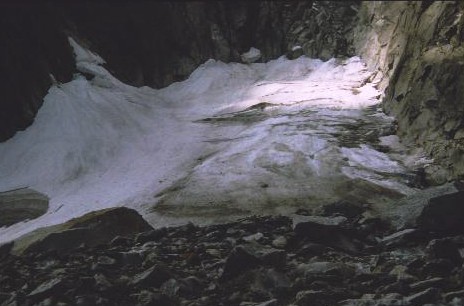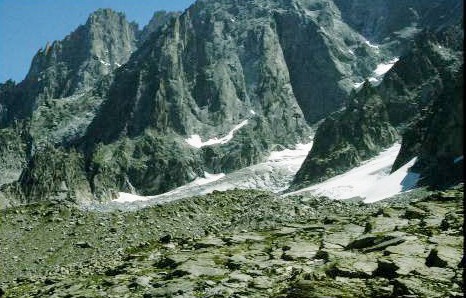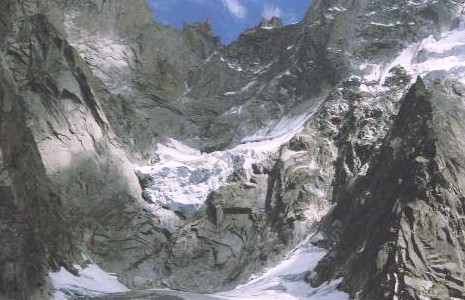 |
 |
 |
 |
 |
 |
Niche Glaciers


Corrie glaciers, though larger than niche glaciers, are smaller than valley glaciers. They still occupy hollows on the face of the bedrock in mountainous regions. Once ice accumulates to sufficient thickness in a niche glacier its erosion action scours the hollow out even more to form smooth amphitheatres on the valley walls. These armchair shaped features are commonly called corries, cirques, or qwms. Some corrie glaciers will spill over the corrie lip and feed into valley glaciers, and many valley glaciers have corries as their starting points.

A good example of a corrie is the north eastern side of Helvellyn in the Lake District. Here, in winter, snow still builds up against the back wall and freeze - thaw takes place. This process is the same as the one that occurs on the rock wall above active glaciers in the alps today.
Red Tarn, at the base of the backwall, occupies the hollow scooped out by the rotational action of ice during Helvellyn's active phase. The lip of the corrie is slightly raised due to the reduced ice pressure and lessened erosion here, and shows the direction in which the ice overflowed from the corrie.
Corries containing active glaciers
can be found in many areas. However, due to the presence of the glacier, the
shape of the corrie base and back is often hidden.
In the photograph below, a receding glacier has broken along a rock ridge in
the corrie base providing a cross-section through the corrie and its glacier.
A dark line representing the bergschrund crevasse can be seen trending left / right across the snow in the top right hand corner of the corrie.

A characteristic feature of corrie glaciers is the arete, a knife like rock ridge formed when two corries erode back against each other. Helvellyn has two aretes, the most famous of which is Striding Edge. The walkers route to the summit of Helvellyn runs along the arete, but mostly well below its top. None the less, the steep northern side, and almost vertical southern side of the ridge are enough to stop many people from using the path.

Where three or more corries erode back into each other the aretes meet like the spokes of a wheel. The remains of the mountain form a pyramid shape, known as a pyramidal peak. The Matterhorn is a good example of this.
We value
your ideas and suggestions. Please contact the
maintainer of this site.
This page
can be found at: http://www.geography-site.co.uk
Last update to
this statement was on:
February 23, 2006
© Copyright Geography Site